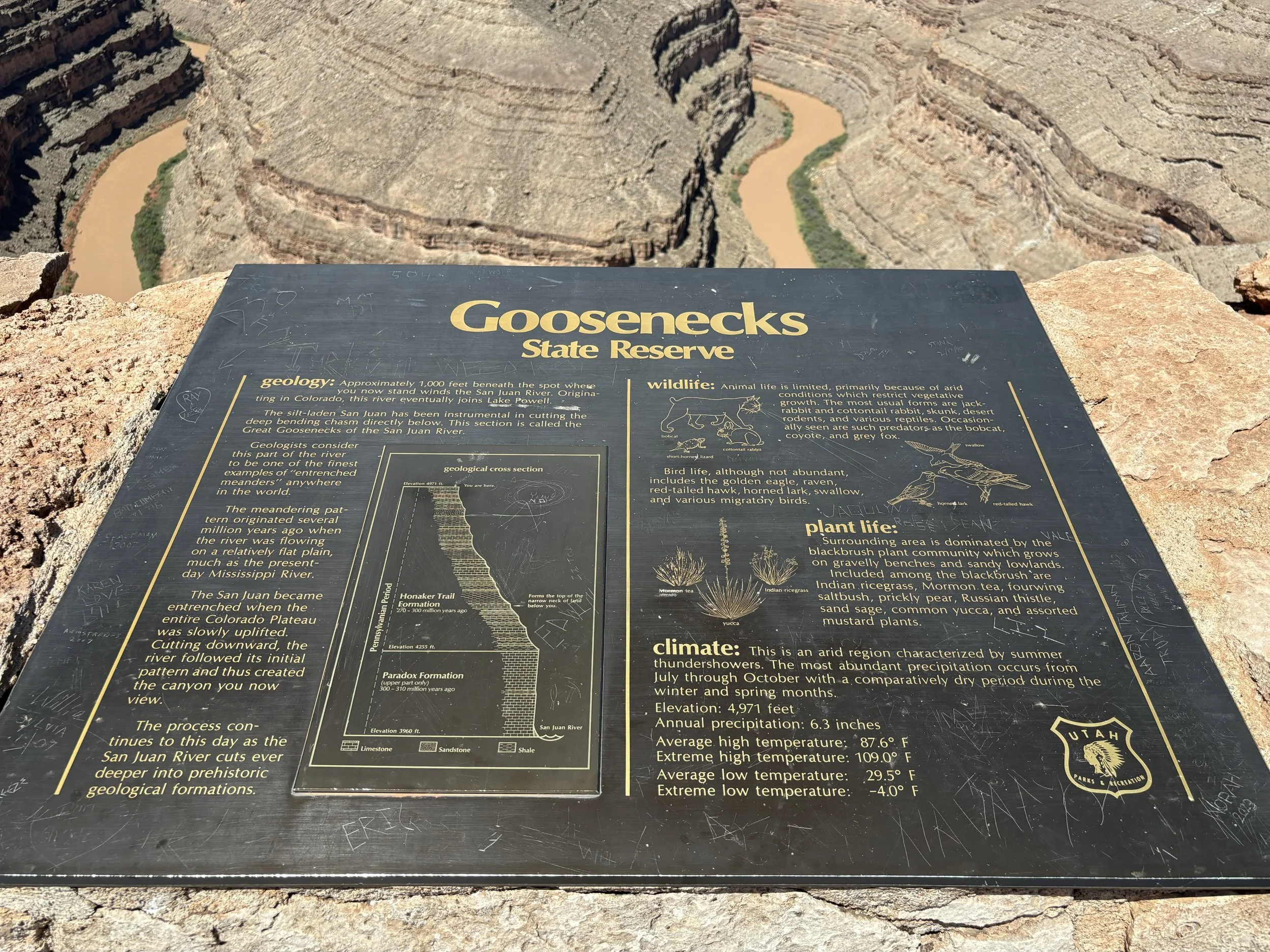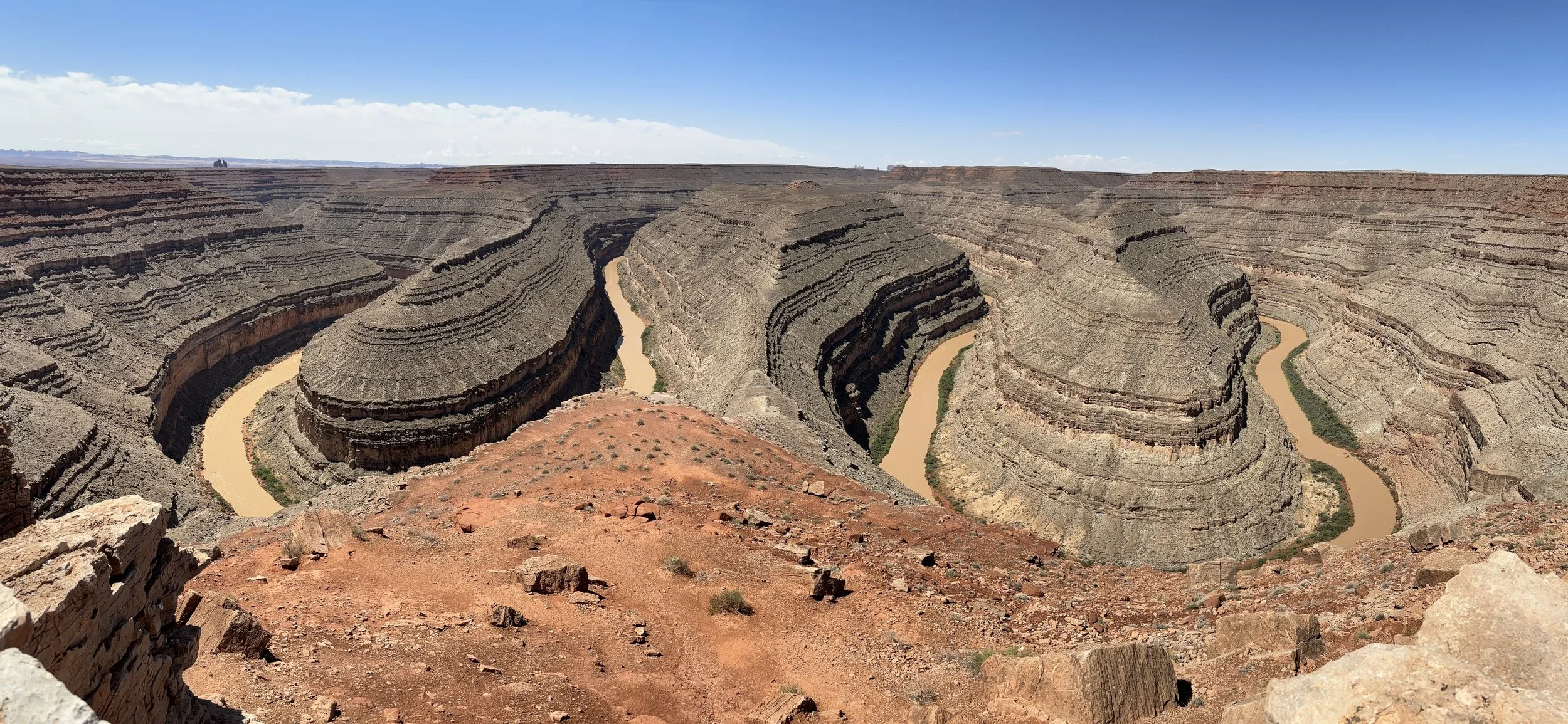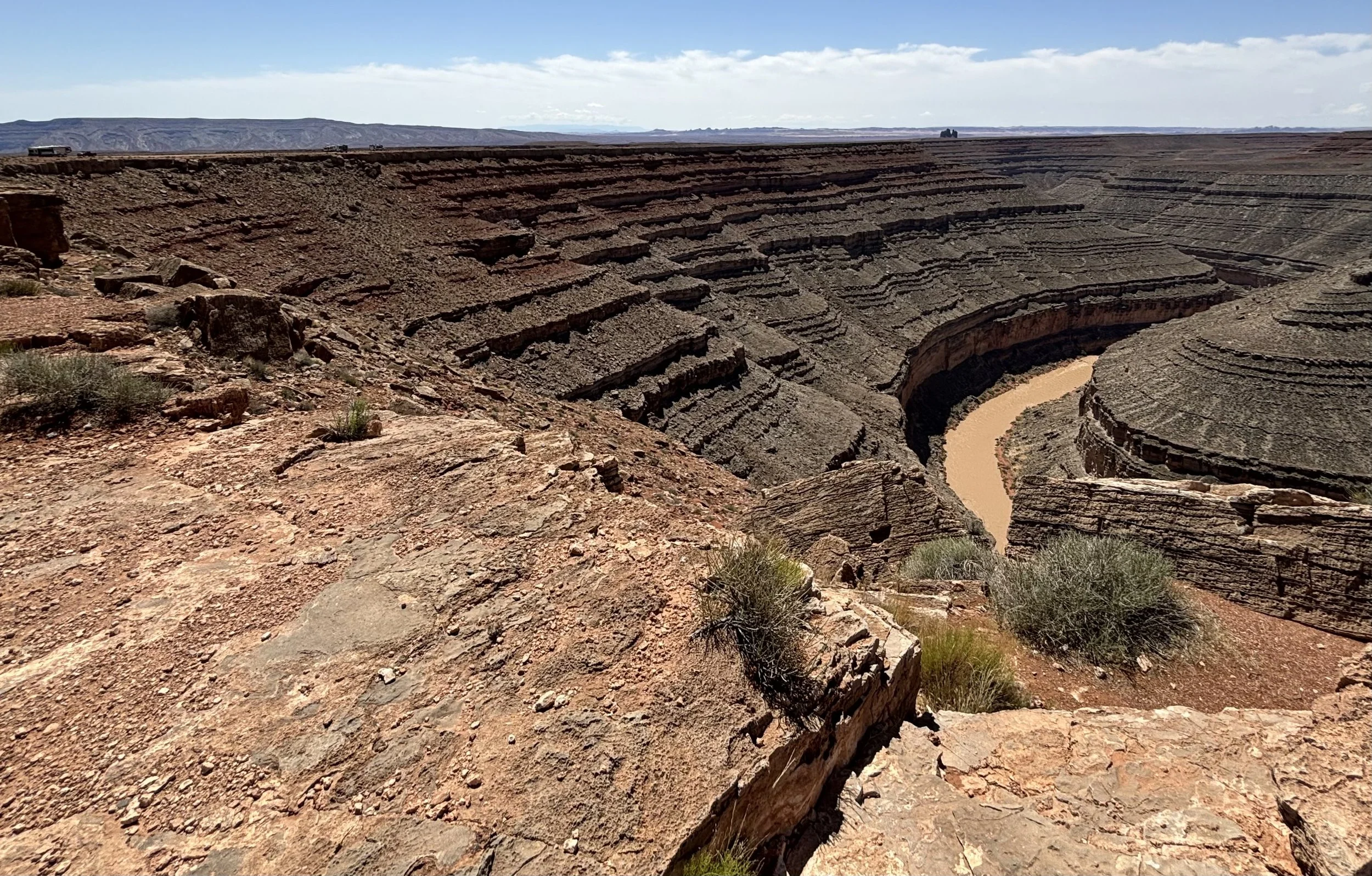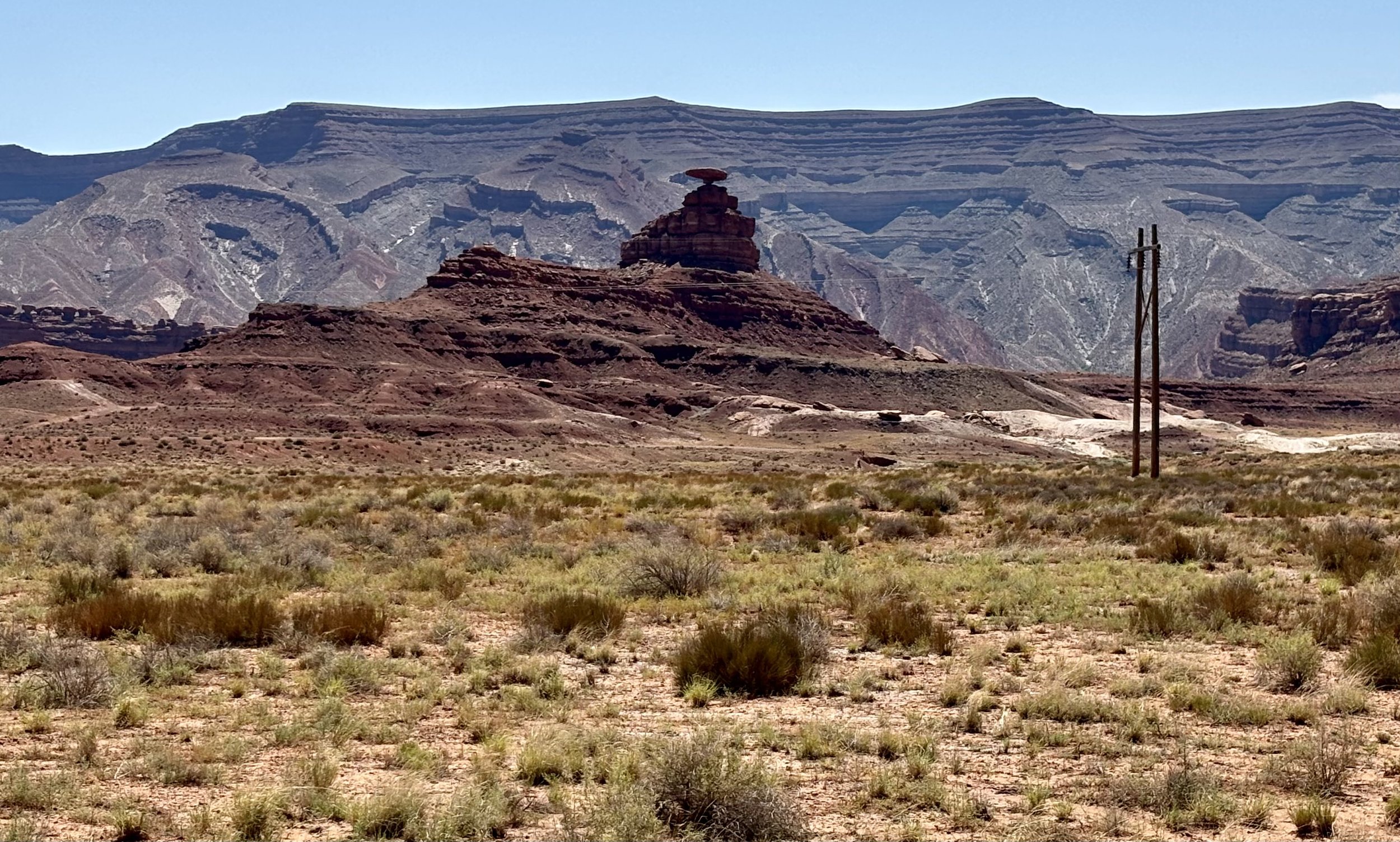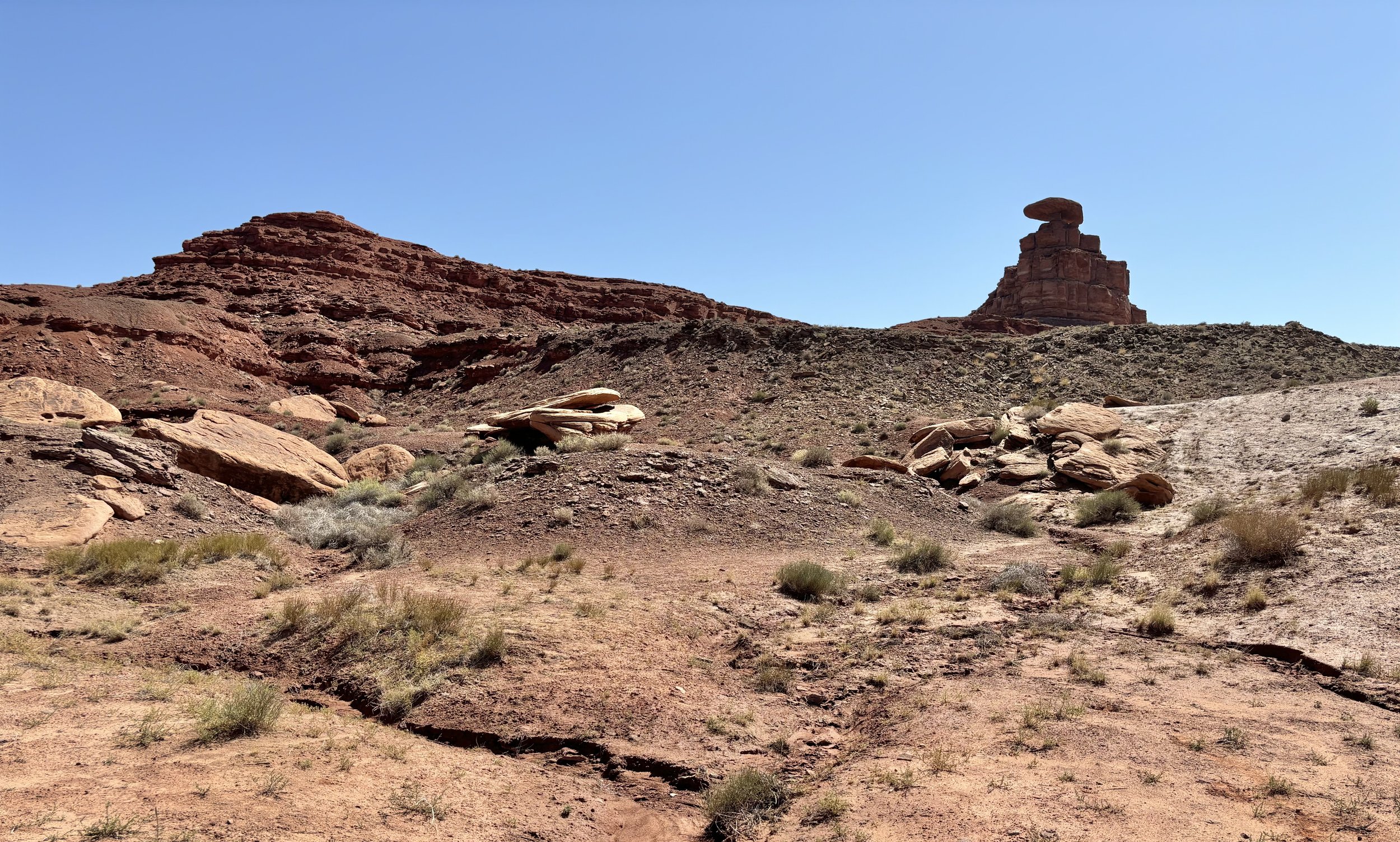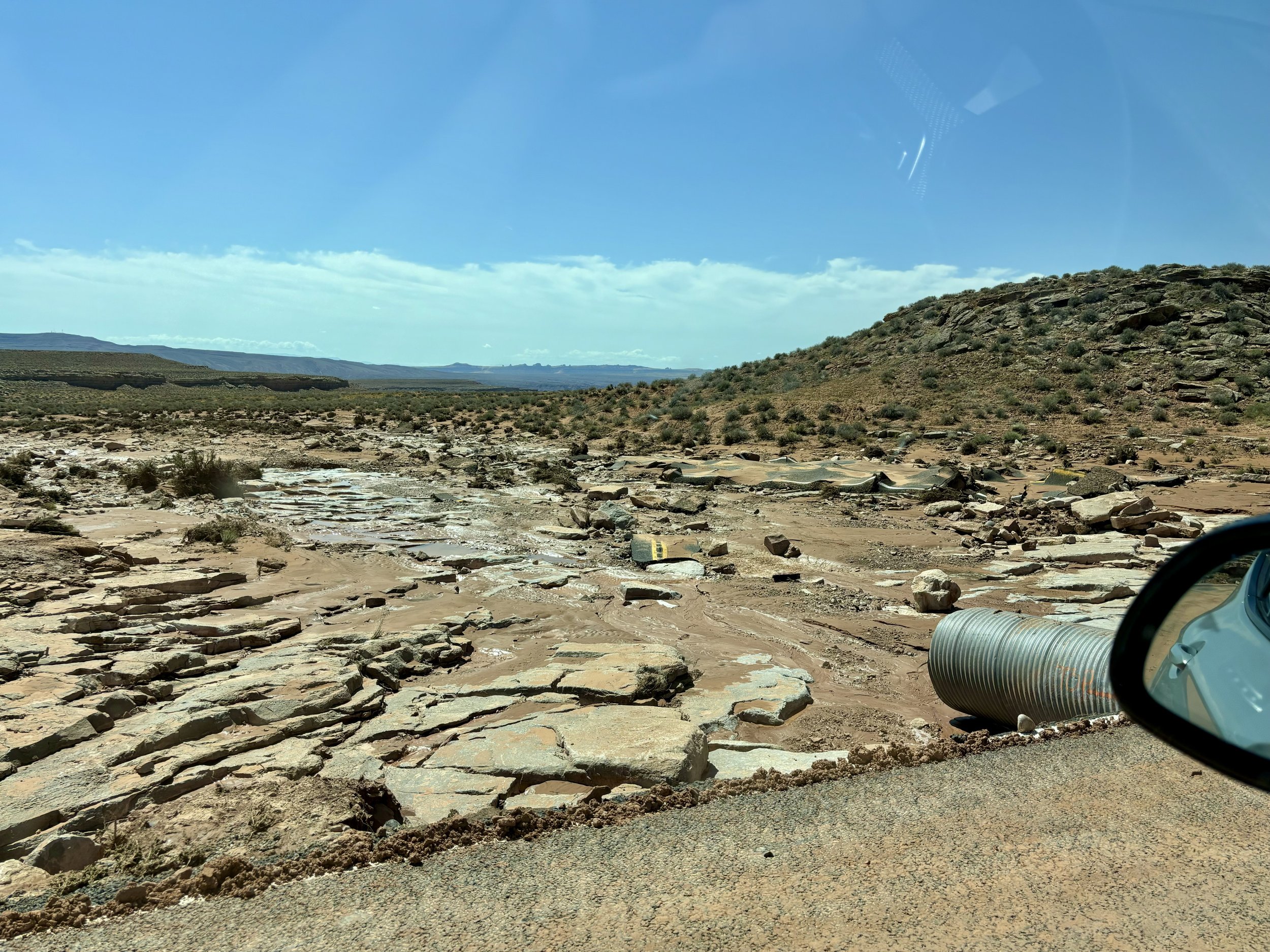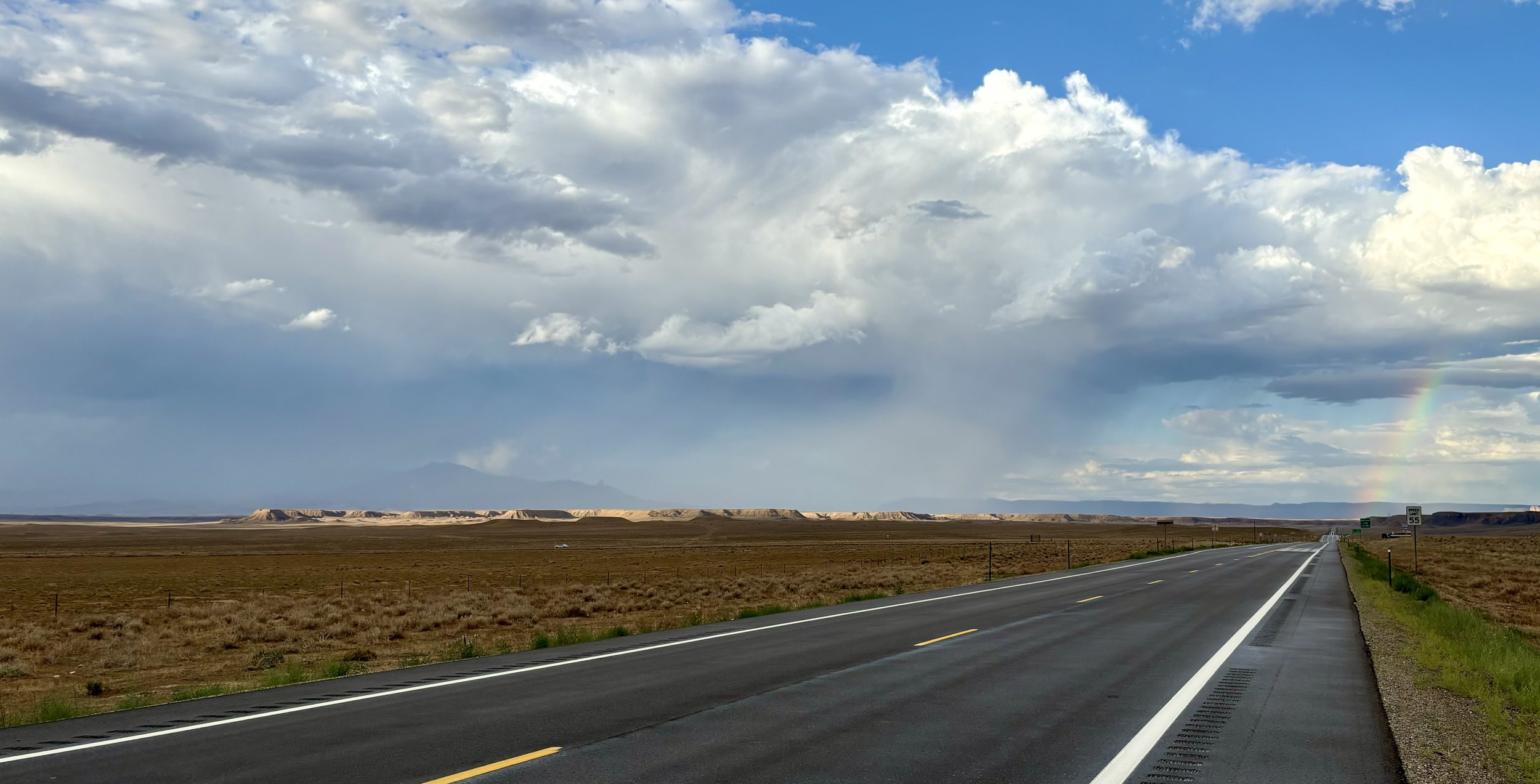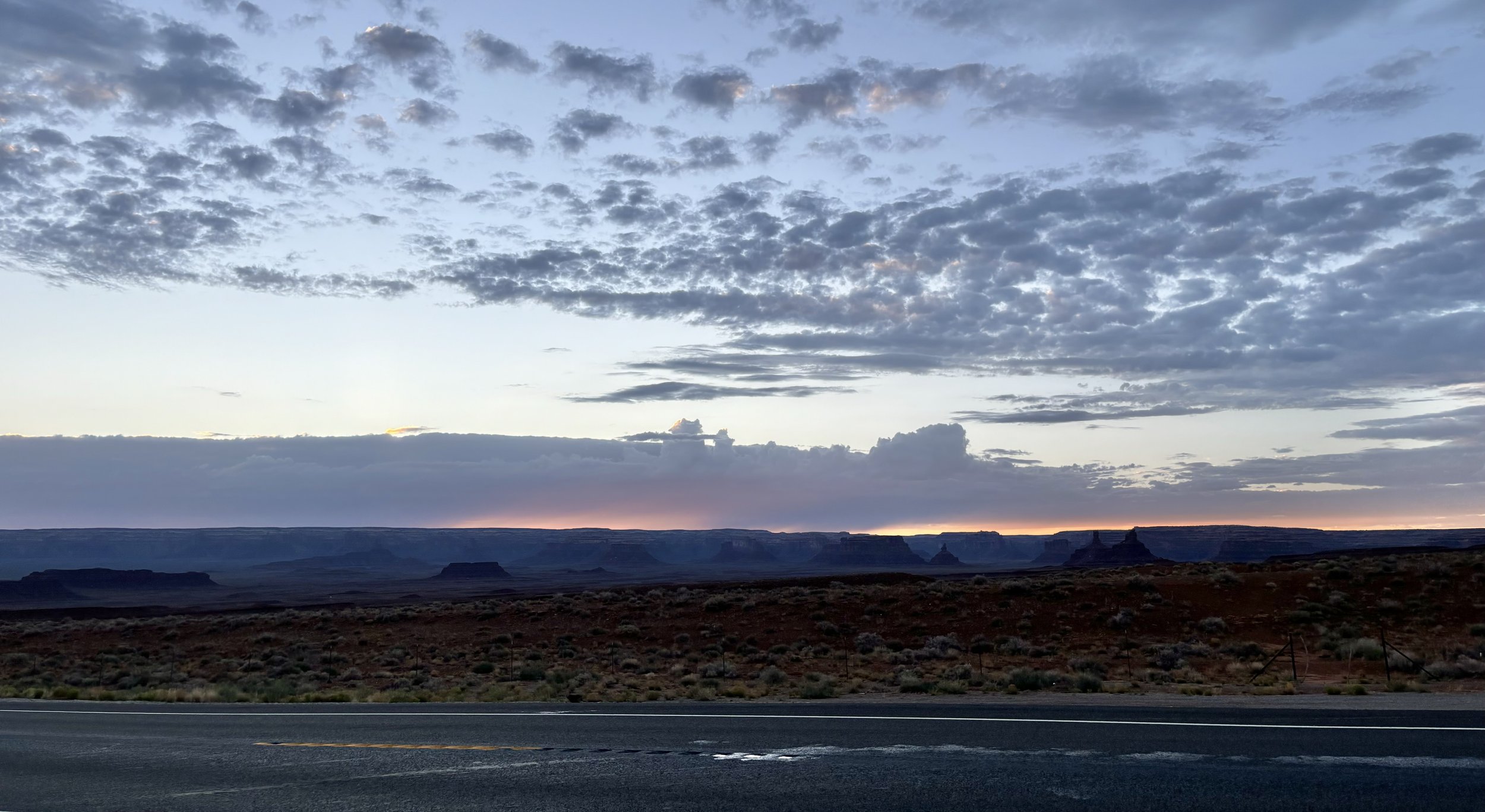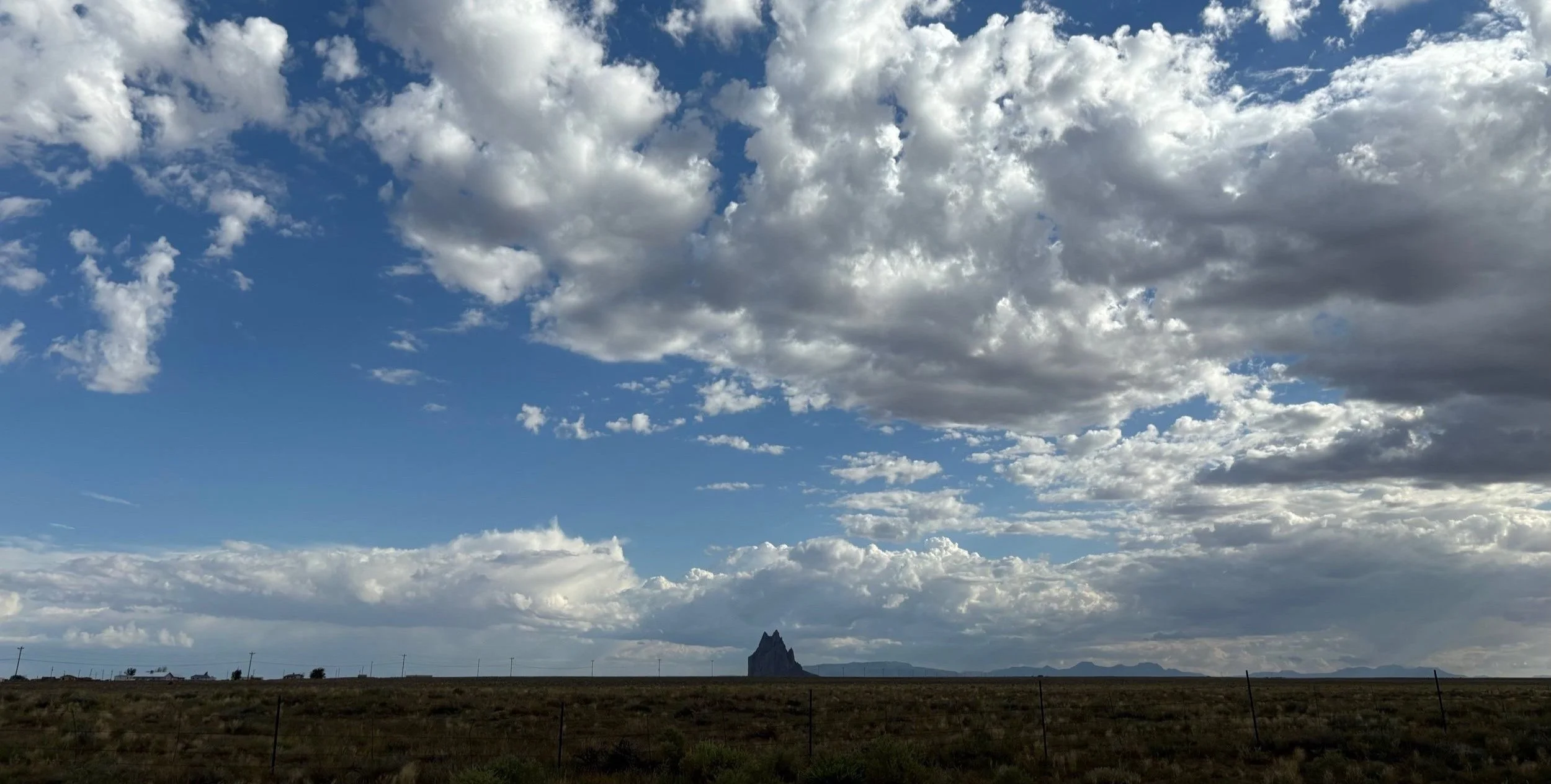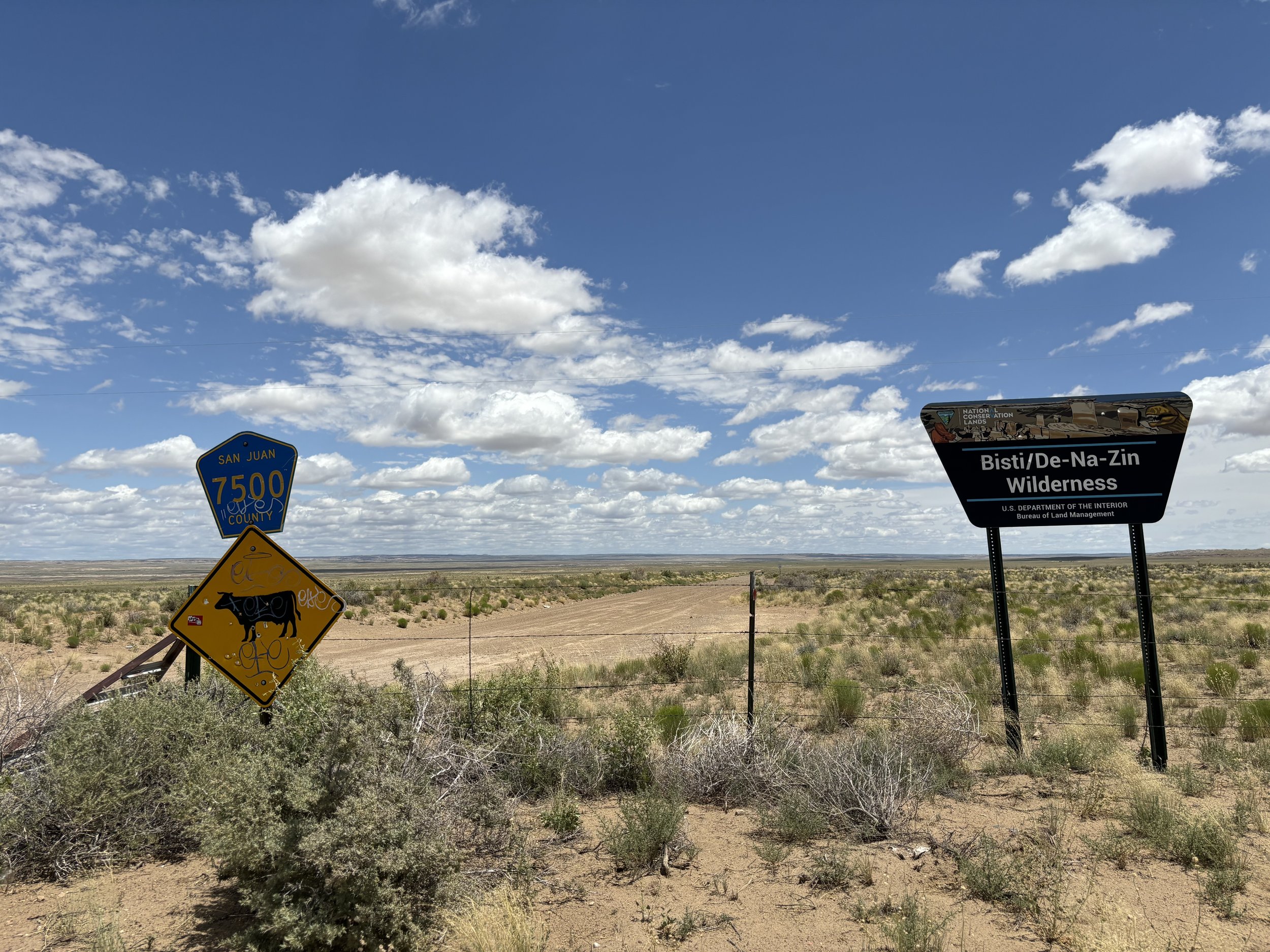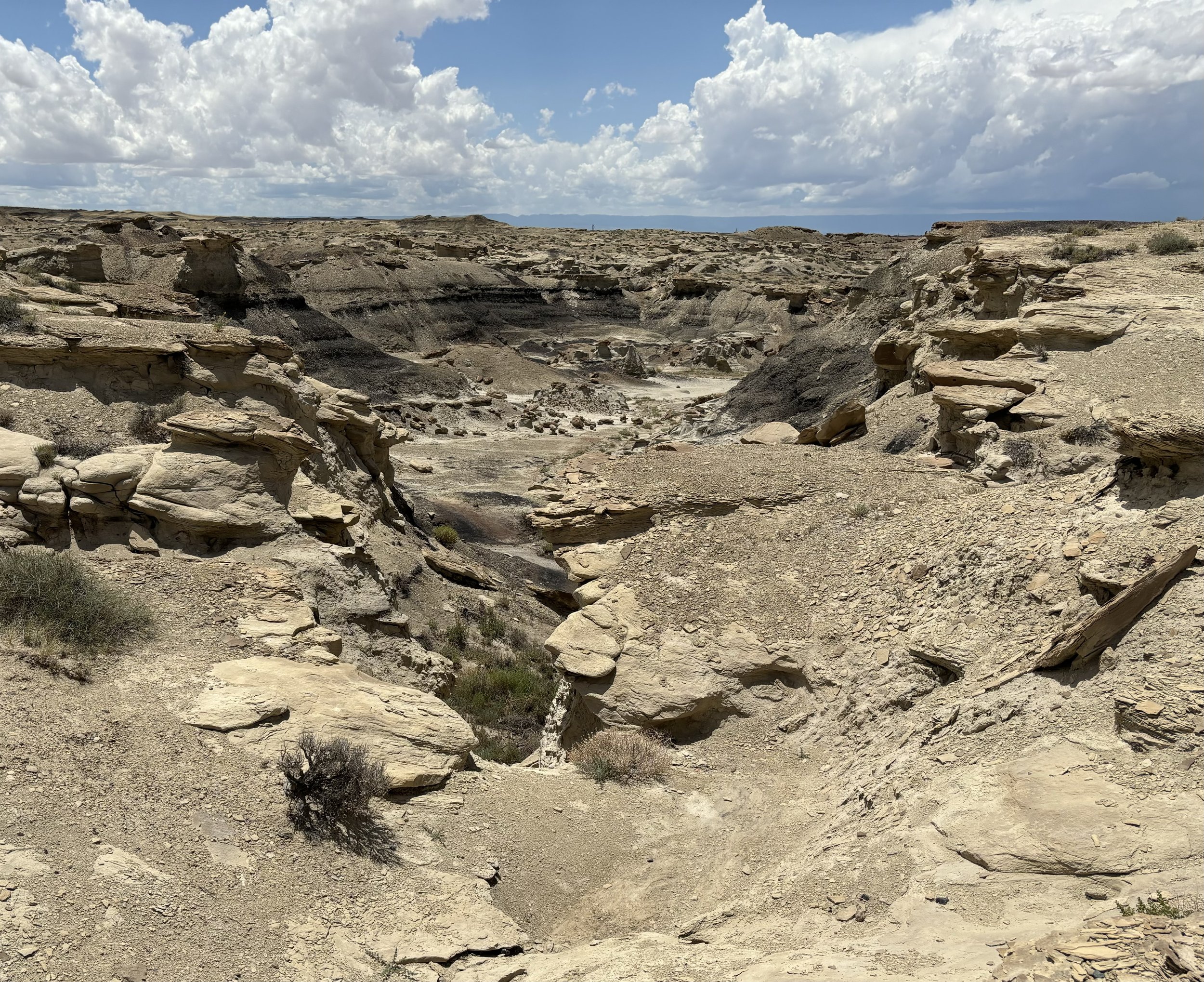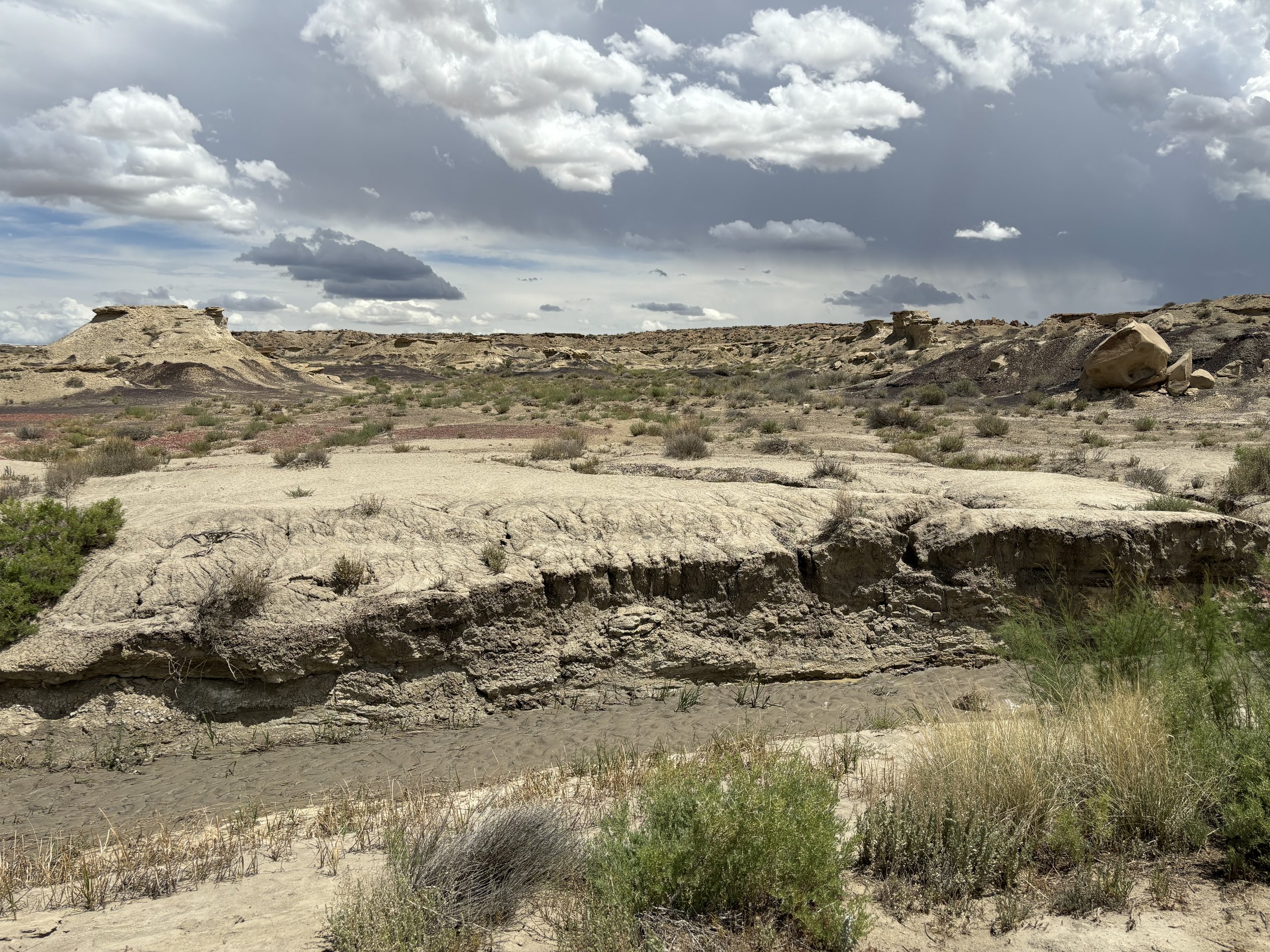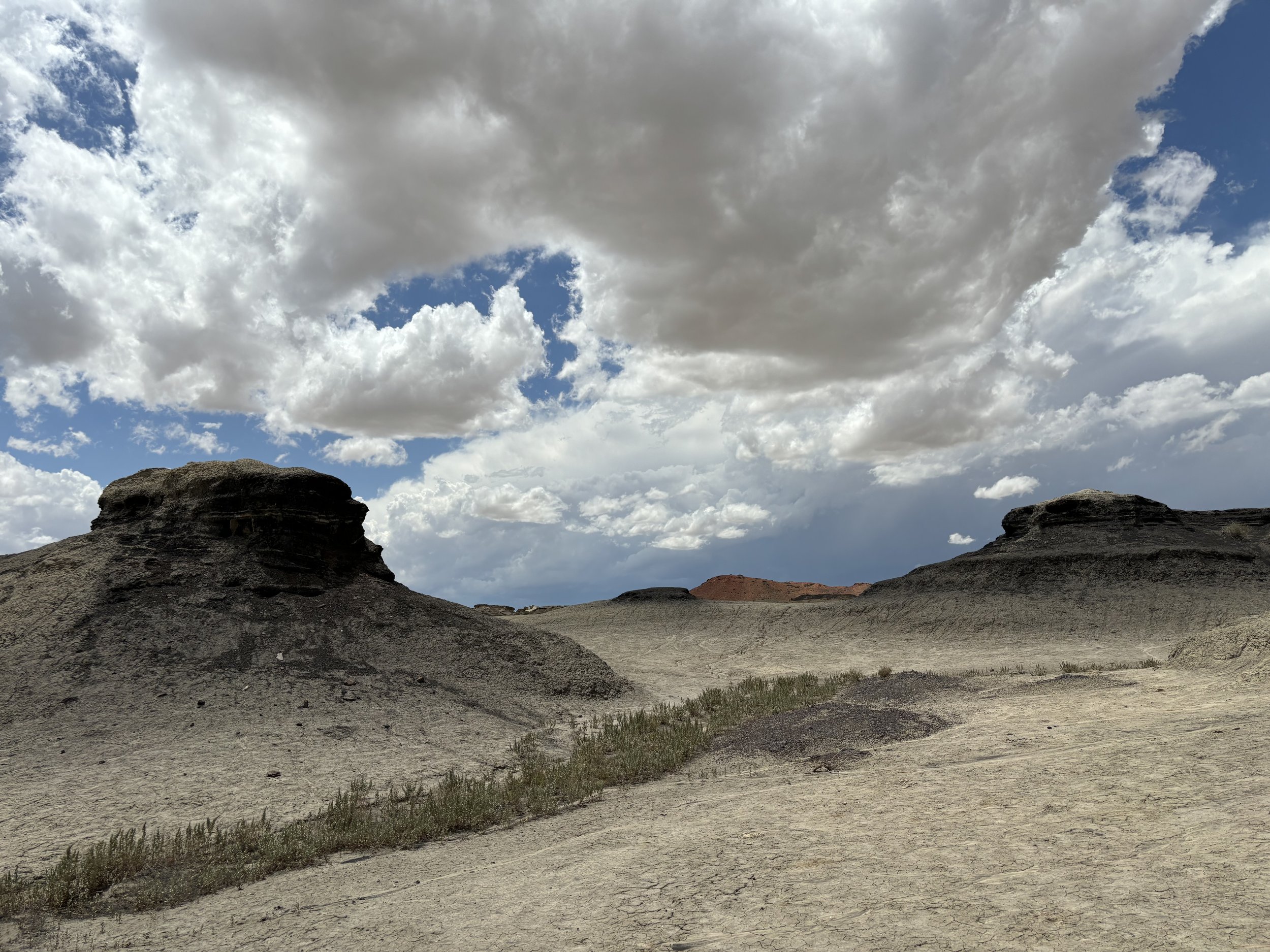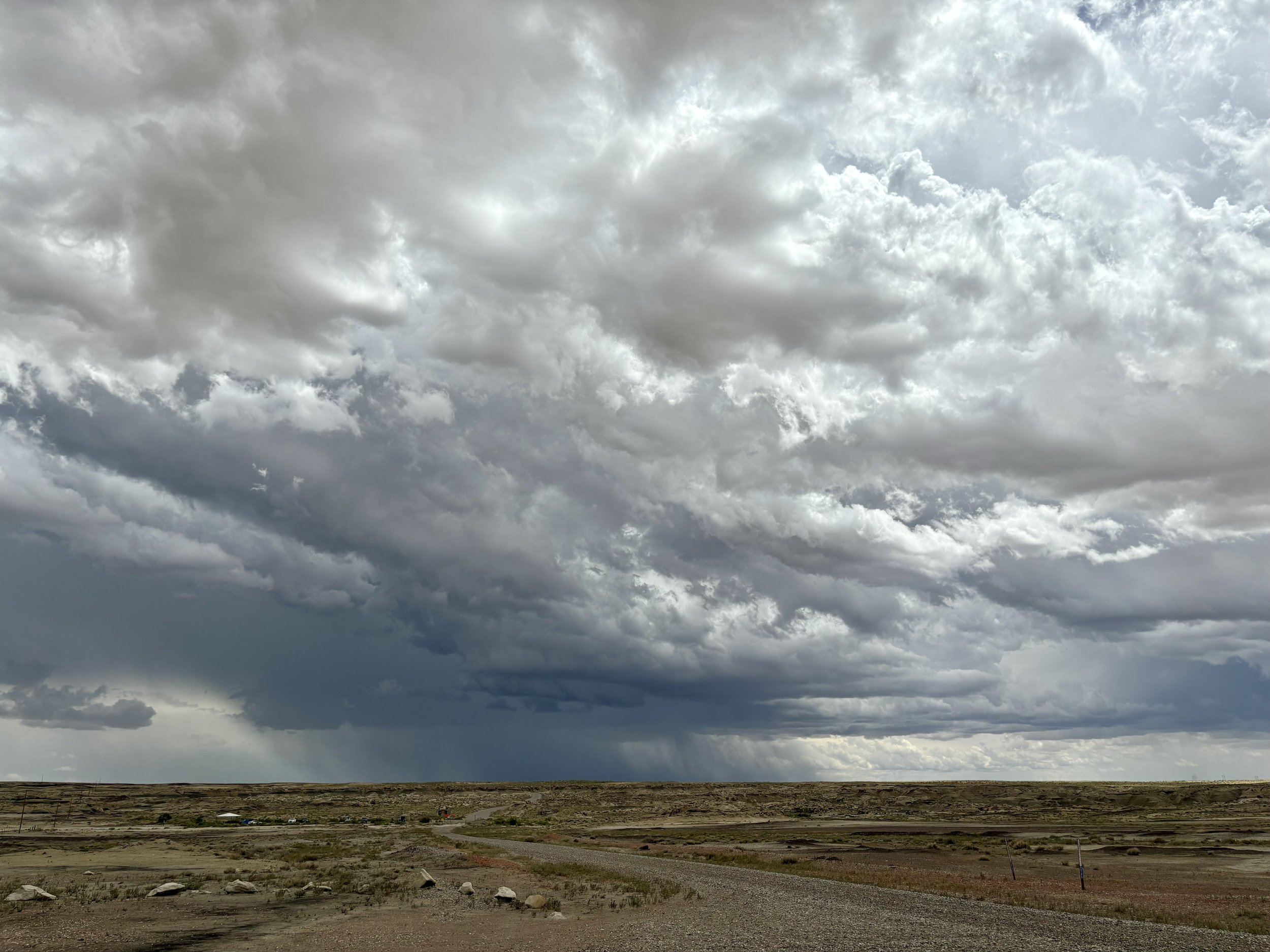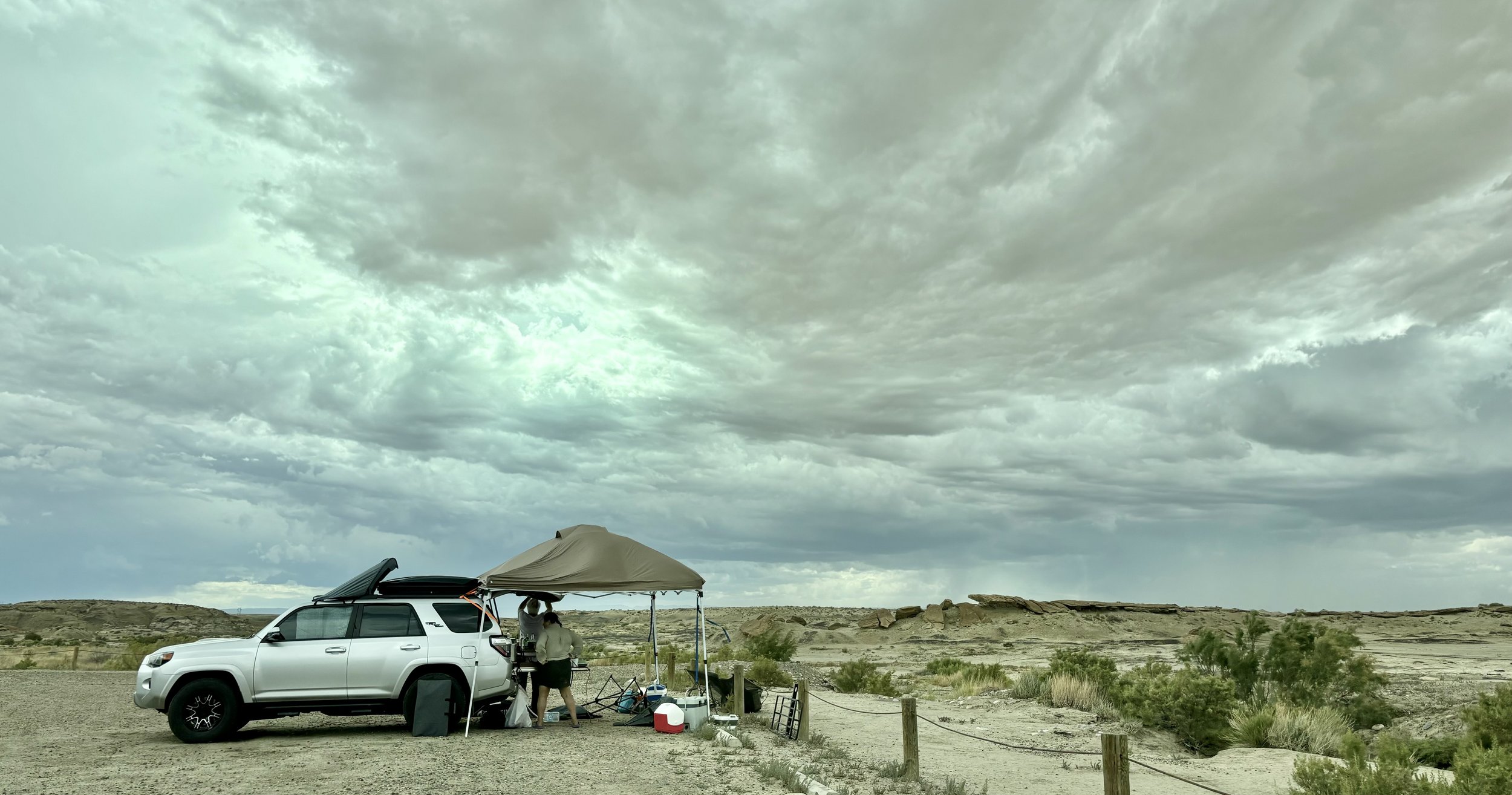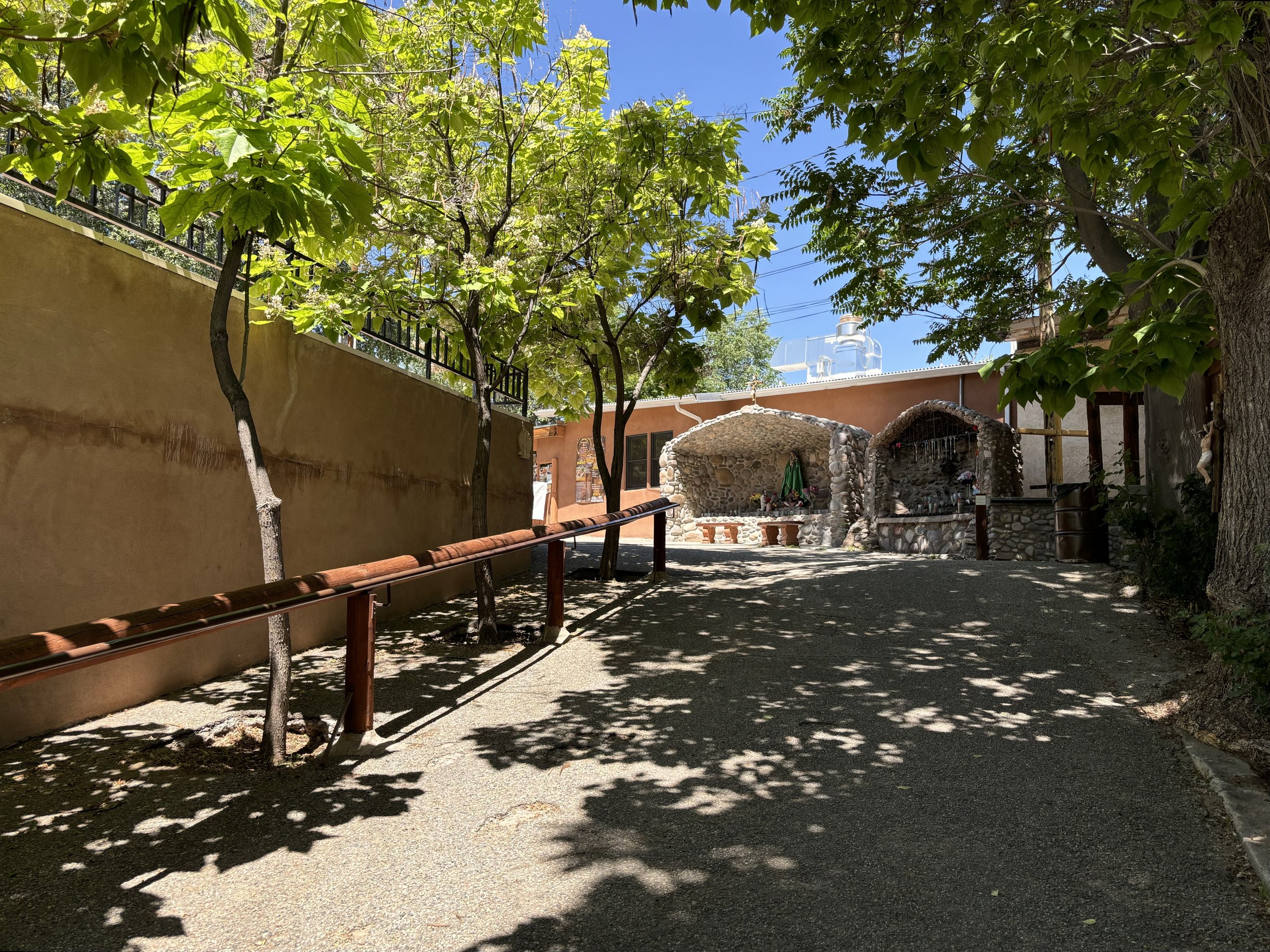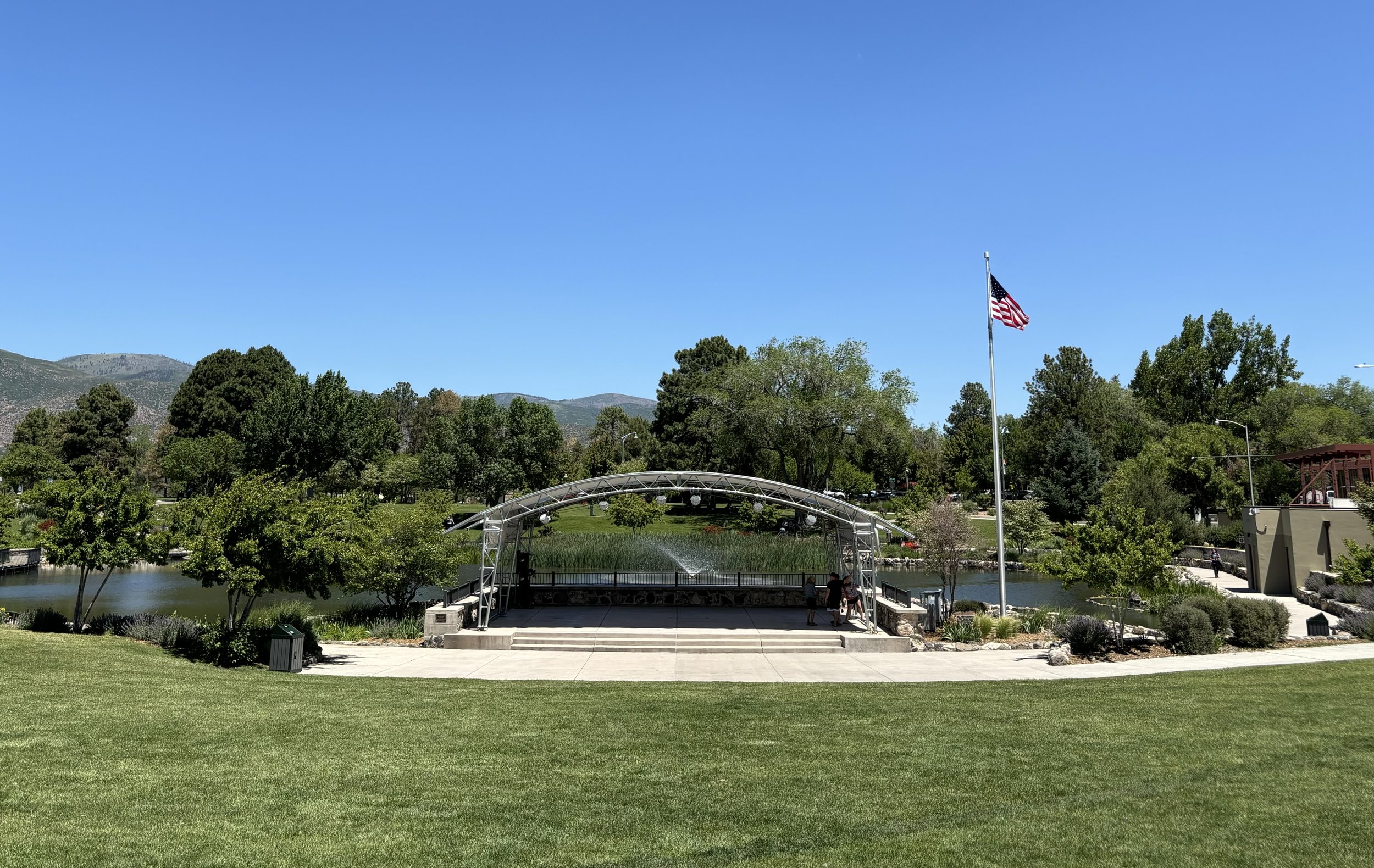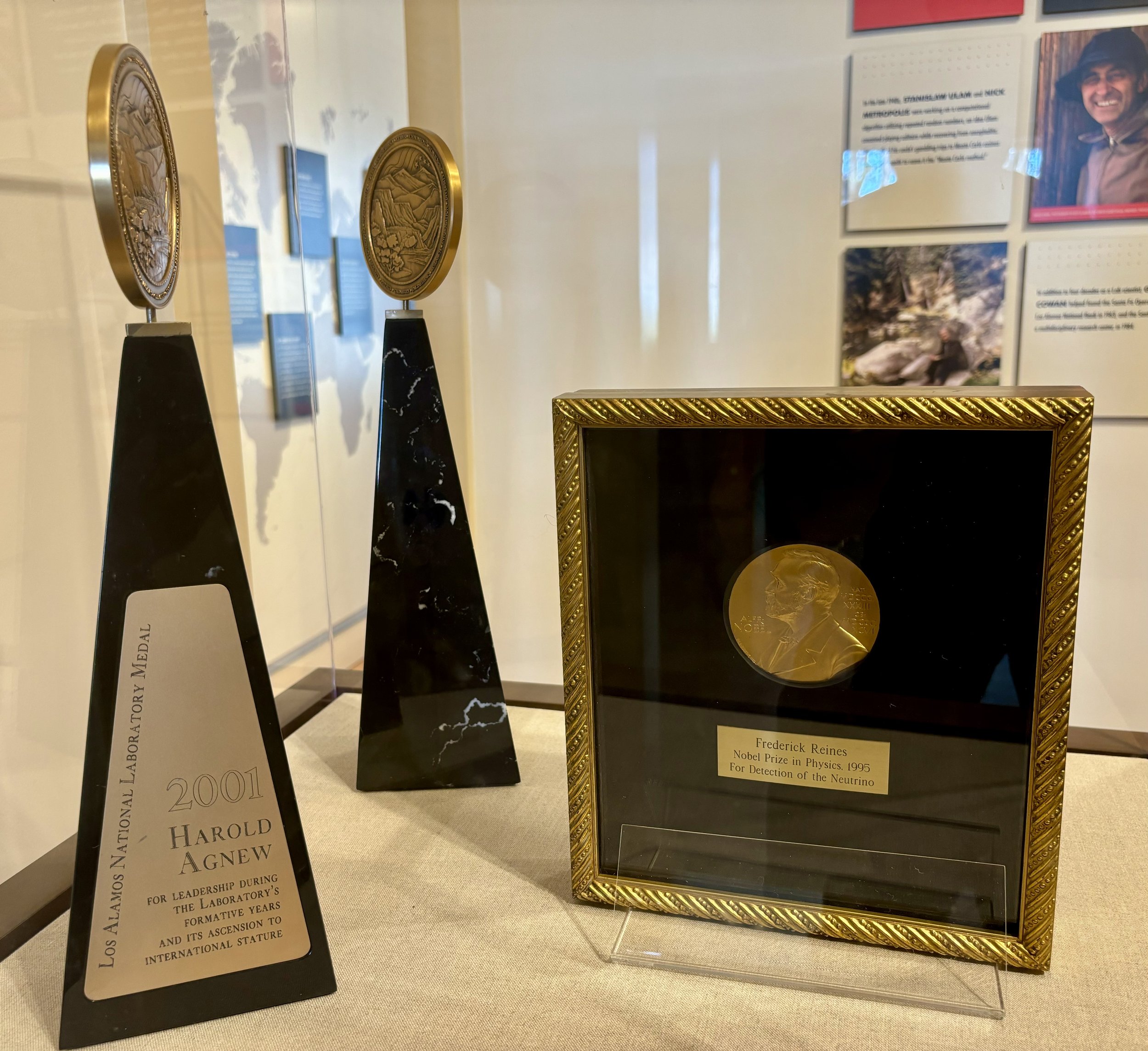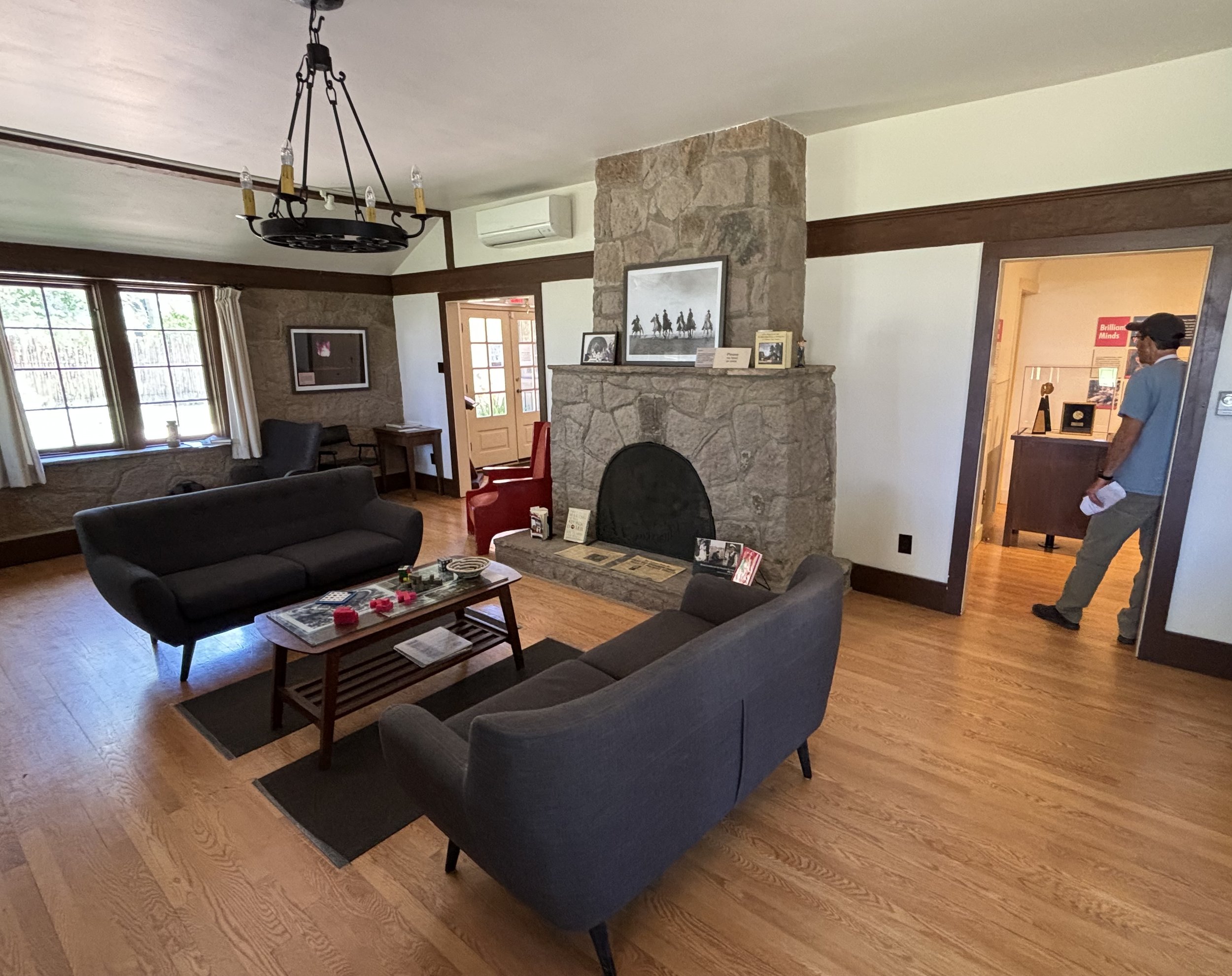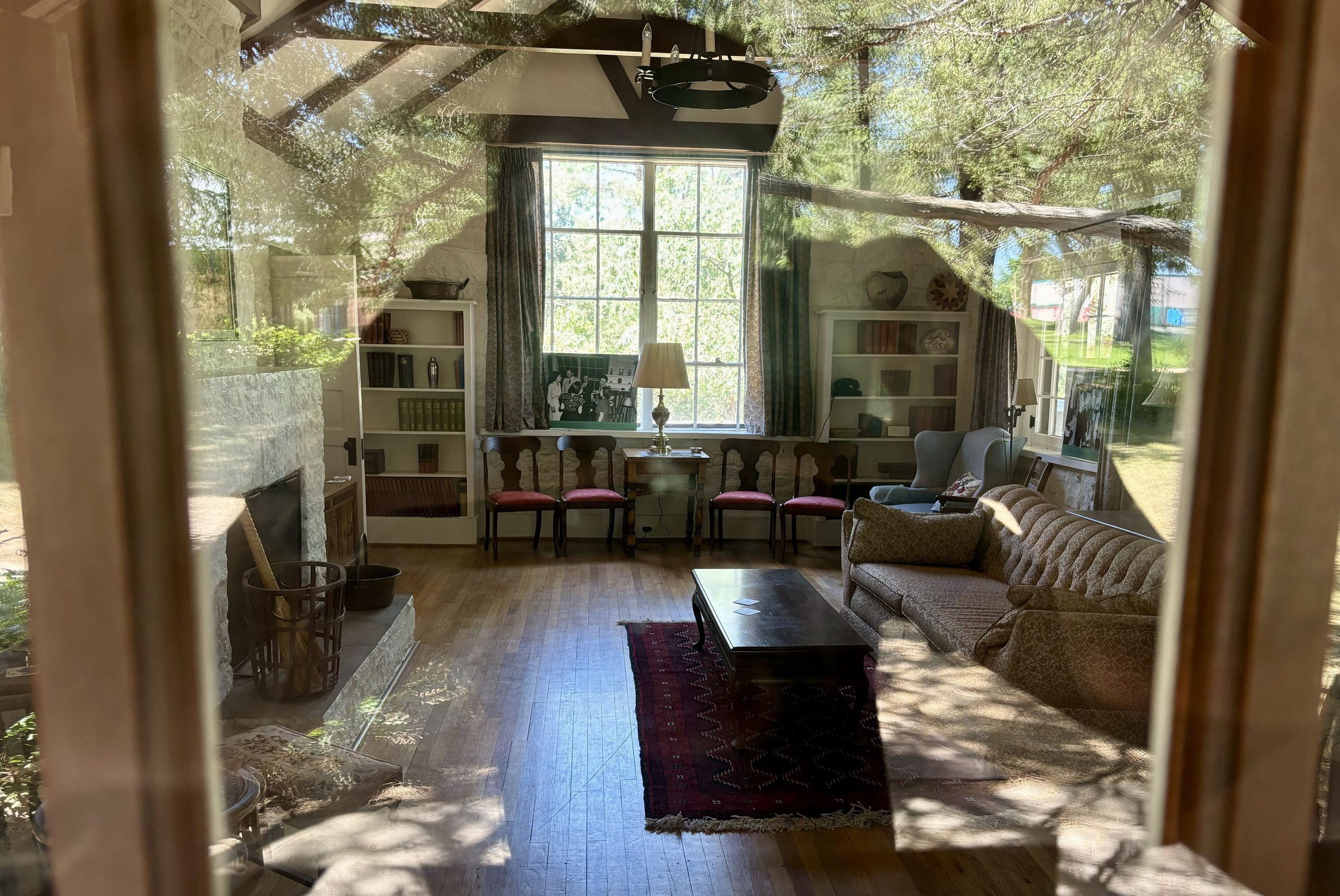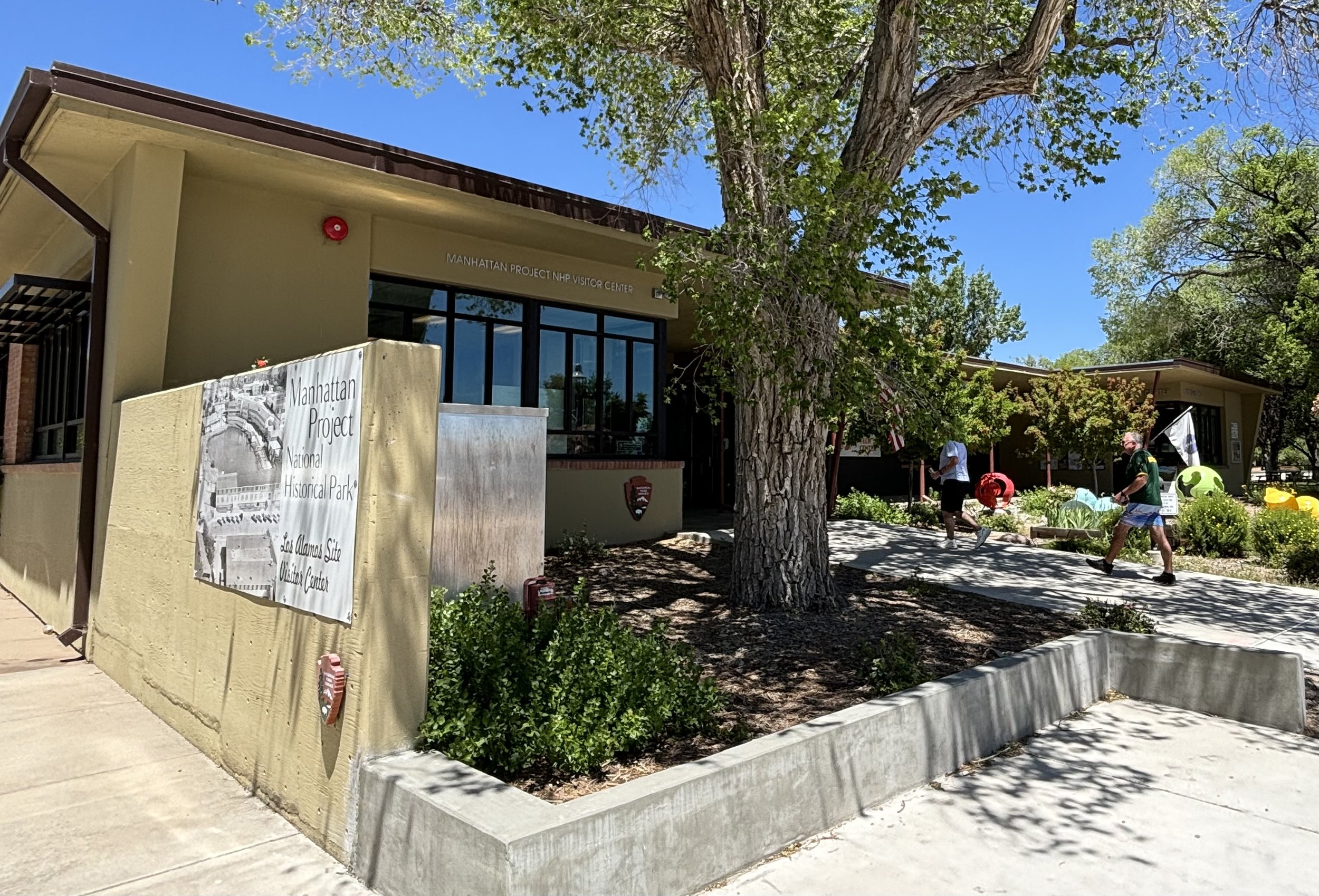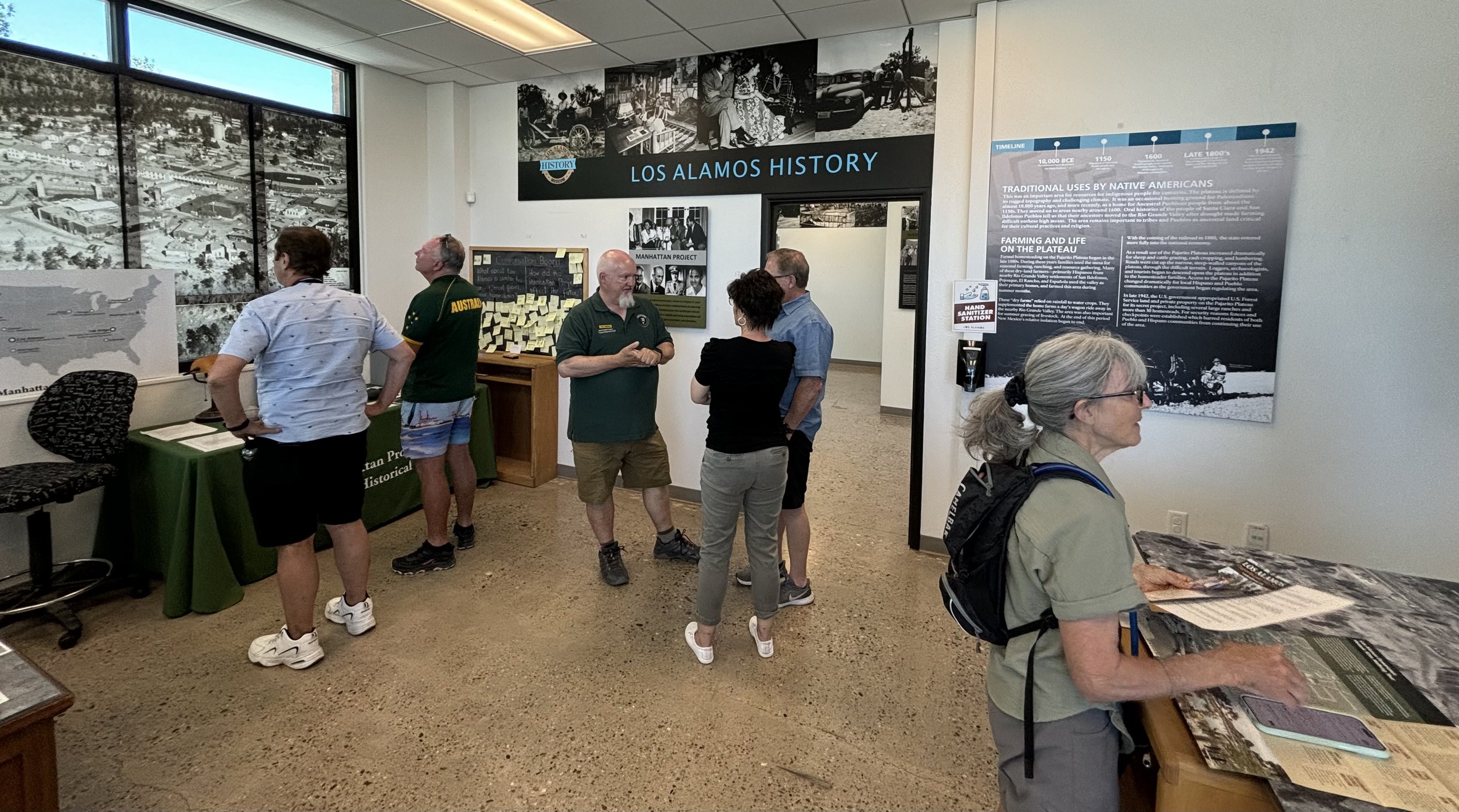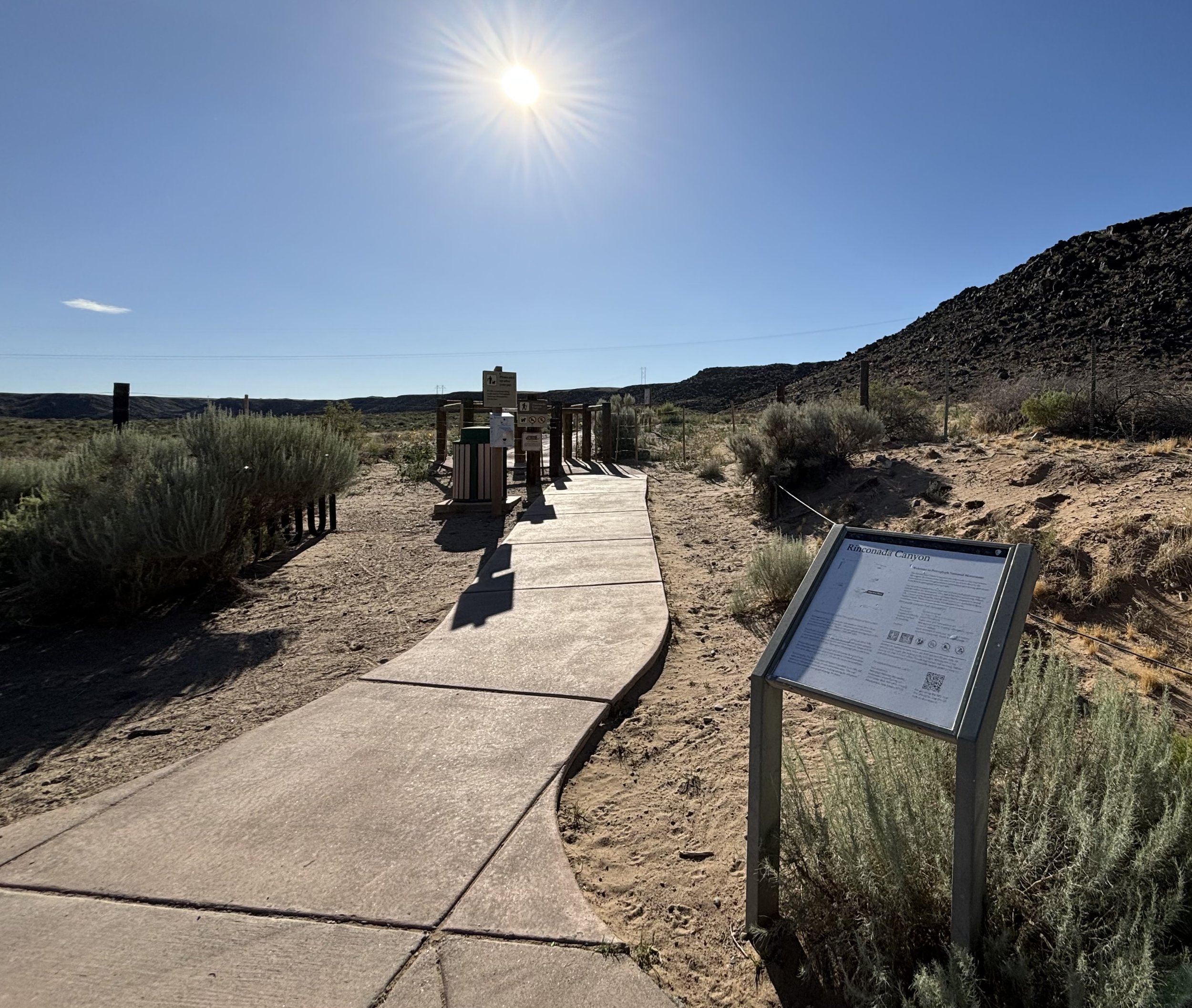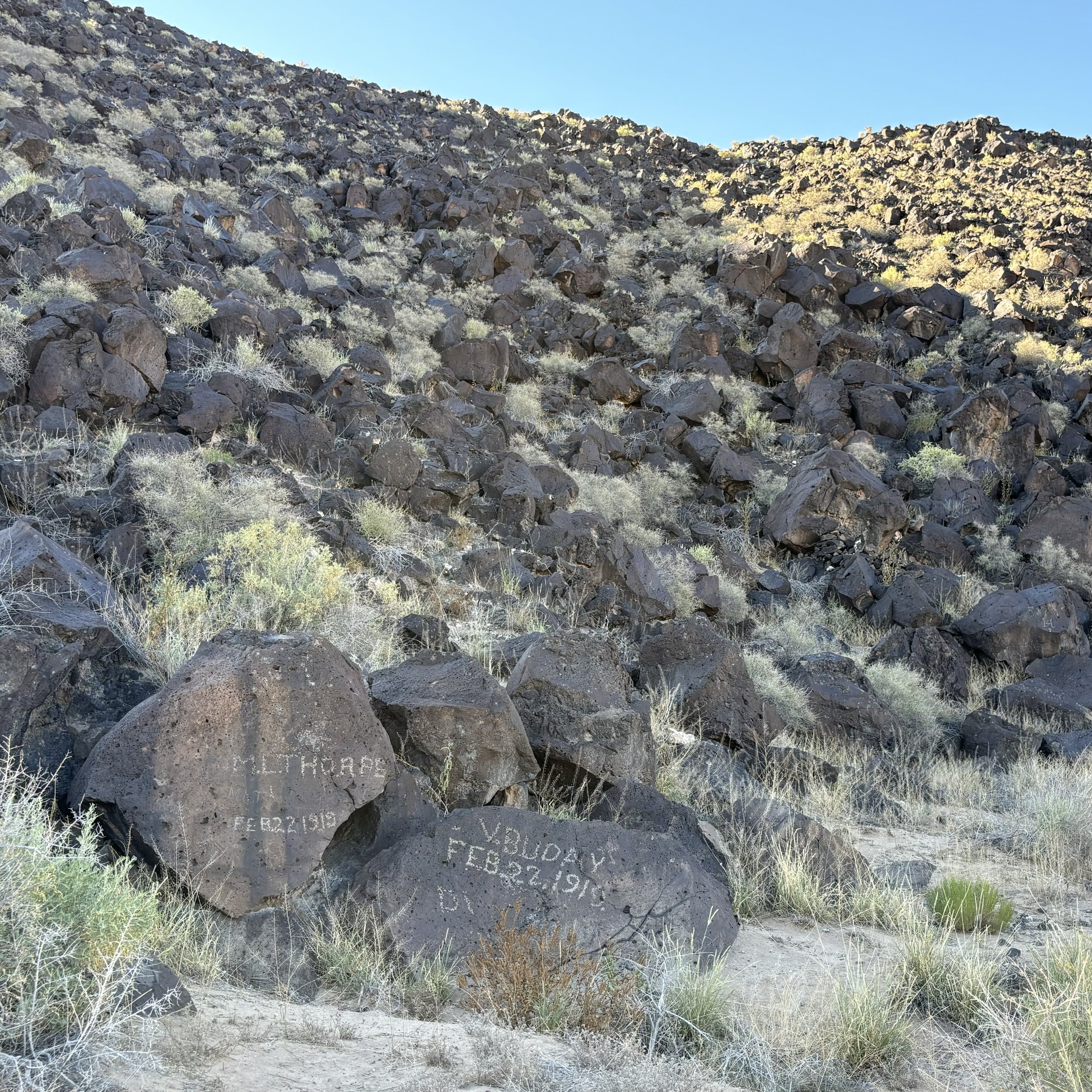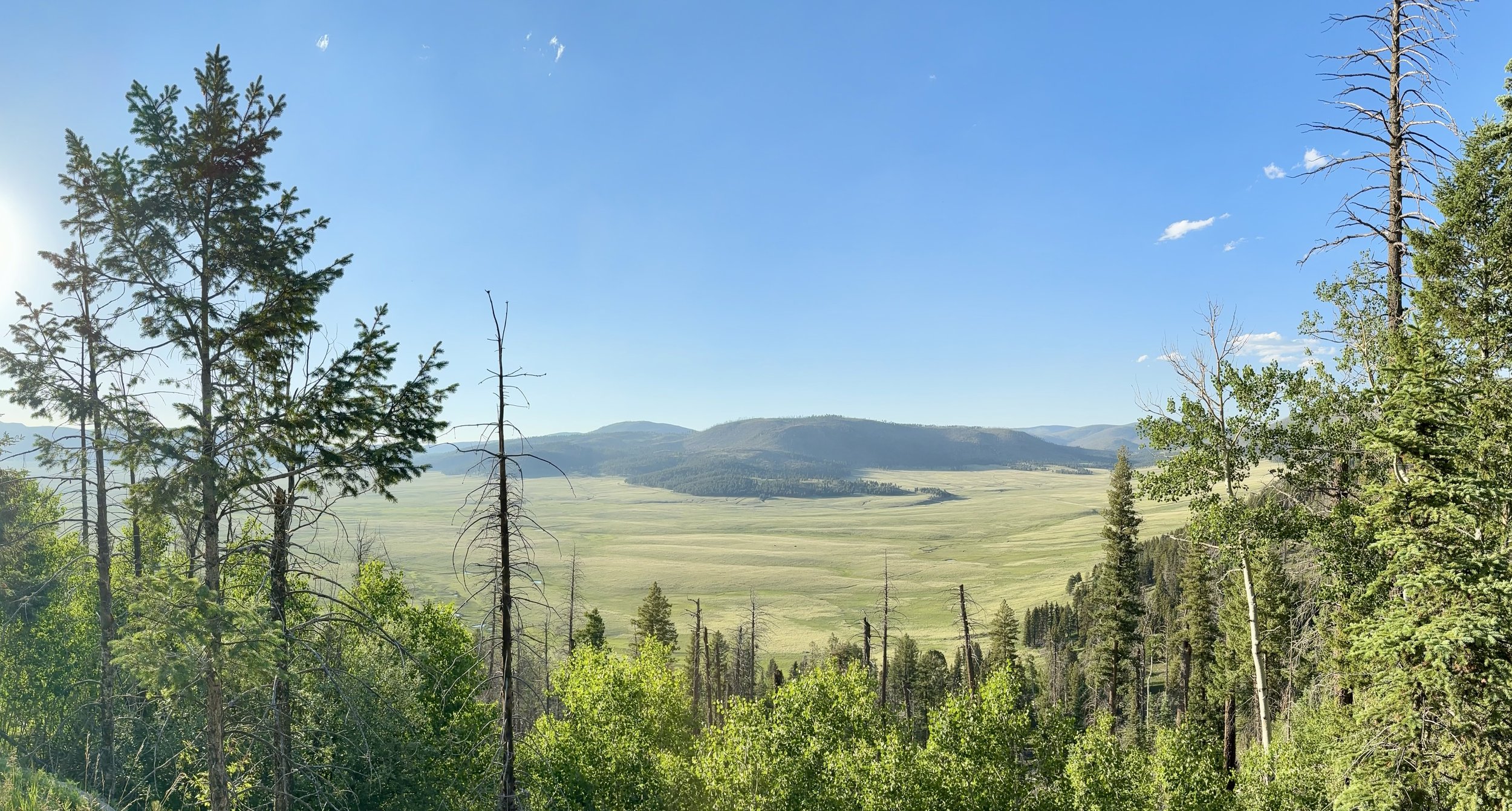After crossing the clay-flooded entryway from the torrential storm the day before, I had finally entered Goosenecks State Park. It was a sweeping view.
….this small park affords impressive views of one of the most striking examples of an entrenched river meander on the North American continent. The San Juan River twists and turns, flowing a distance of over six miles while advancing one and a half miles west on its way to Lake Powell.
Along the perimeter of the canyon were tiny outlines of campers and RVs, parked for rest and a waypoint for hiking. The river’s direction increasingly meandered through the pressure of time. All streams inevitably do this, as the nature of water is to find a way.
From the edge, seeing everything lets you appreciate it beyond the unblemished line from long ago.

